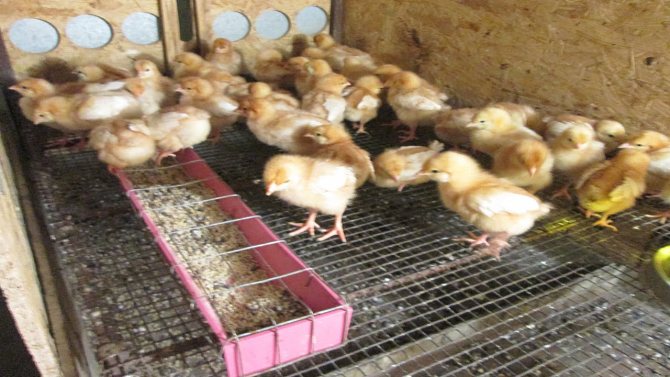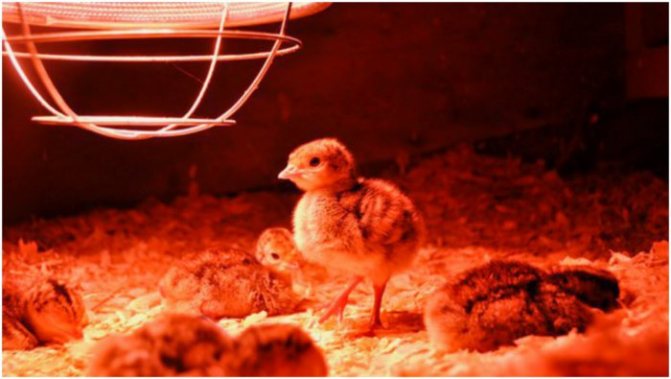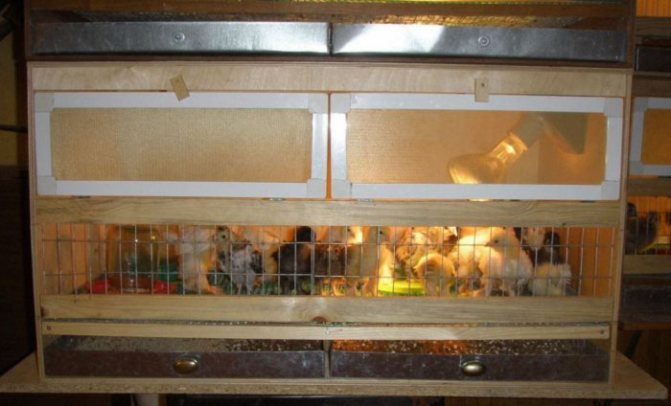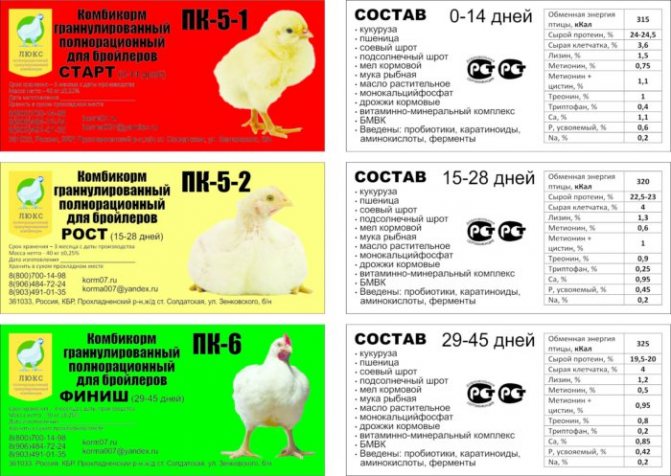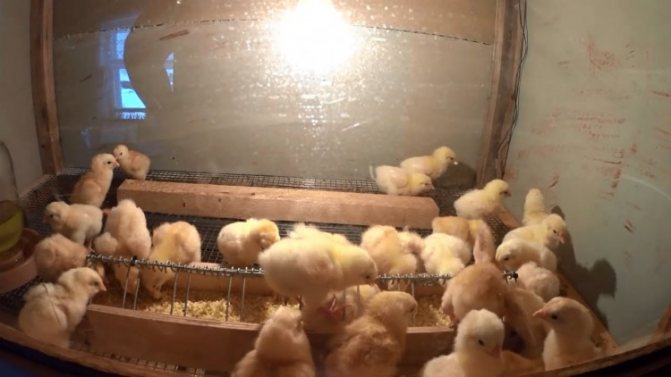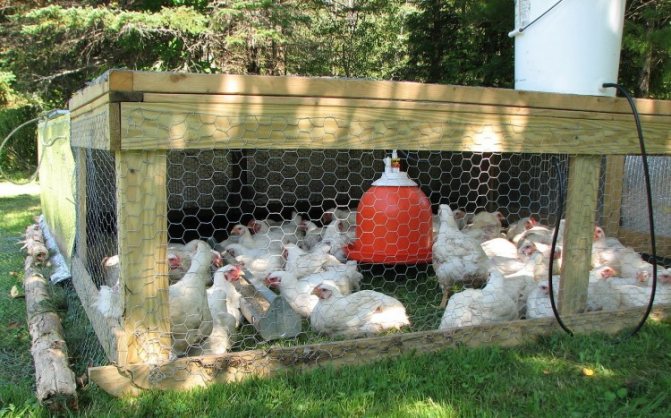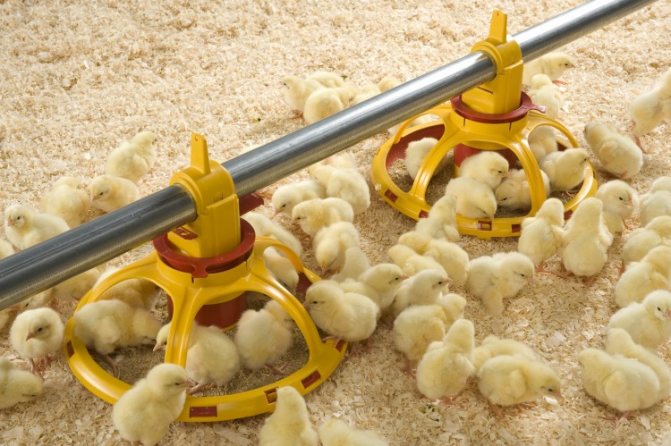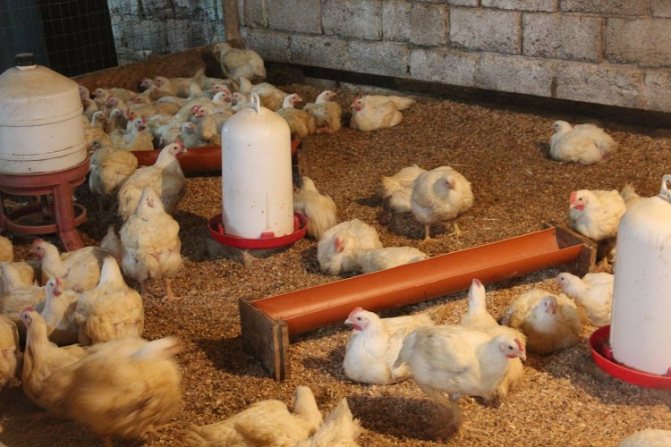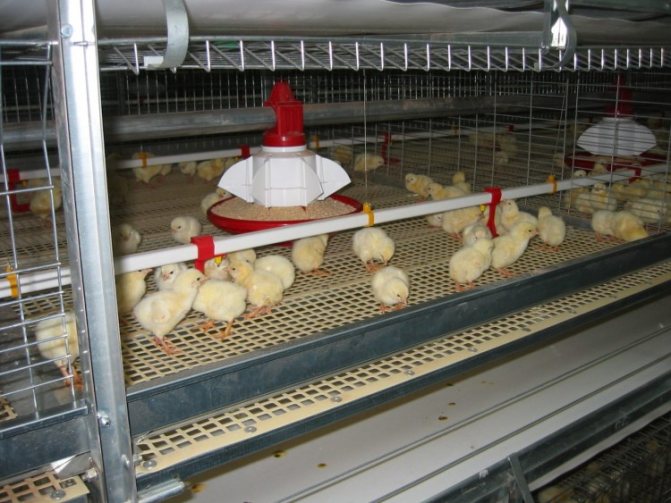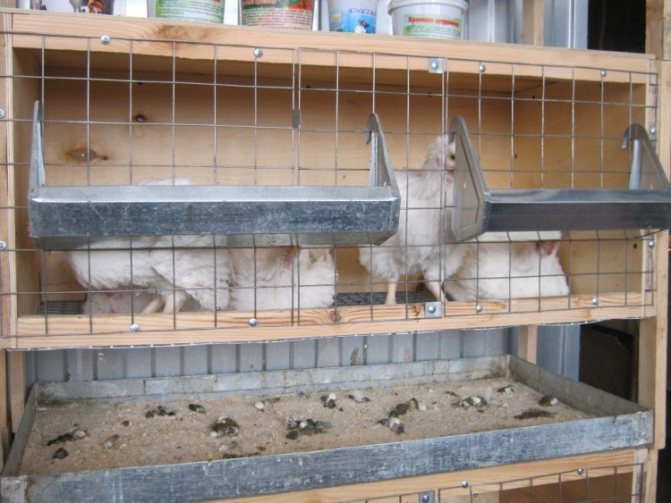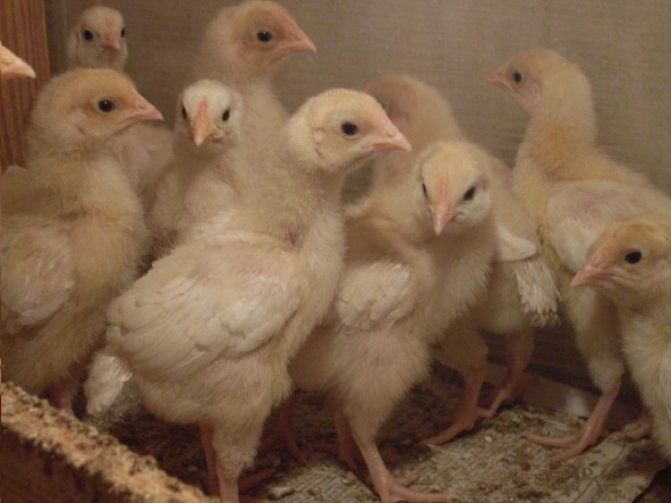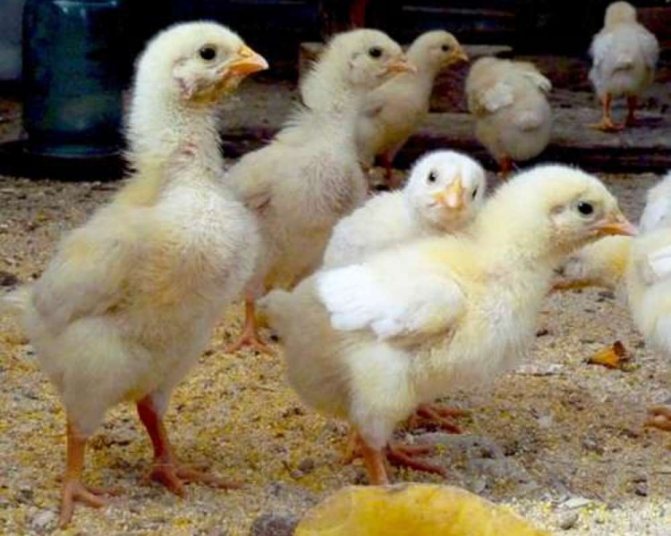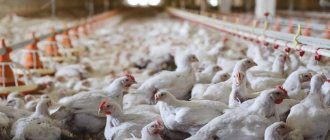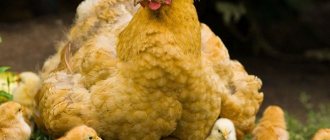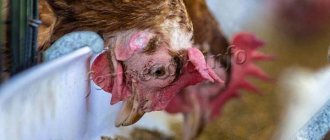How to care for chickens should be known to everyone who intends to raise chickens. Caring for the young is manifested in the organization of acceptable living conditions, a full-fledged diet and the prevention of diseases. Chicks from birth to 10 days require special attention. During this period, part of the growing livestock perishes even among experienced poultry farmers, because not everyone understands how to raise chickens at home without loss.
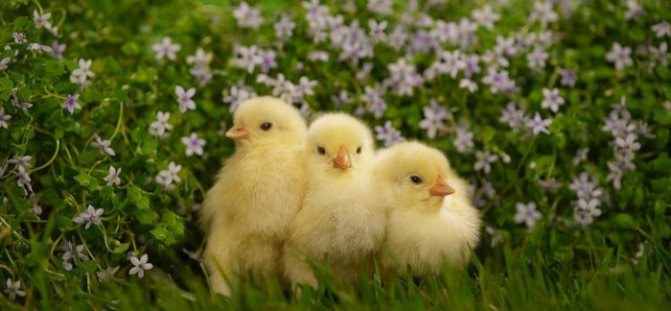
Walking chickens
General rules for feeding chickens
They begin to feed the chicks at home from the first life. So that they do not get sick, gain weight well, they adhere to some general rules:
- The dishes are cleaned, the remains of the food are removed, the water is changed several times a day.
- The containers are regularly washed, disinfected with soapy water, 5% formalin or alcohol.
- The design of the dishes for eating and drinking is thought out so that the chicks cannot get into it.
- Feeders fill only a third.
- In the early hours, feed the chicks from a leaf or saucer.
- All birds should receive the same amount of food. Less active and weak chicks need to be planted and fed.
- Once a week, young animals are soldered with a solution of potassium permanganate for the prevention of intestinal diseases.
- All feed must be fresh.
The feeding regime for chicks of different ages is different:
- first week - 8 times a day;
- 10-30 days - 6 times a day;
- 30-50 days - 4-5 times a day;
- after 2 months - 3-4 times a day.
For the normal growth and health of a newly born chick, proper care is important. From the first days, you should adhere to the thermal regime. In the first days, newborns are warmed under a lamp at 28-30 ° C, then the temperature is reduced daily by 1-2 ° C. Round-the-clock lighting promotes a good appetite. Chicks are released from the box into the room at the end of the first week, and on the street from the second. Being active also has a positive effect on growth. The litter is changed regularly and the box is cleaned. Sick individuals are identified and isolated in a timely manner so that the infection does not spread to all livestock.
The right incubator
In addition, it is especially important to choose a good room for this incubator. It must meet the following requirements:
- Must be dry.
- Should be at the optimum temperature and humidity.
- Must have good ventilation and lighting.
- Must be disinfected.
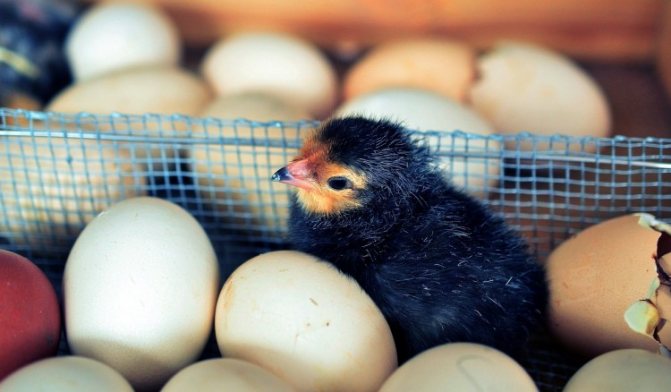

Before sending young chicks to the incubator, it is necessary to disinfect, check for rodents, mice and rats, and prepare a warm bed for small chicks.
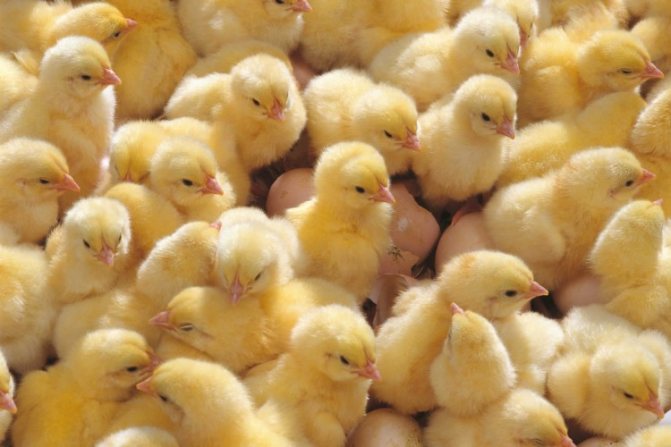

In addition, very often heat meters, special feeders, and hydrometers are placed in the incubator.
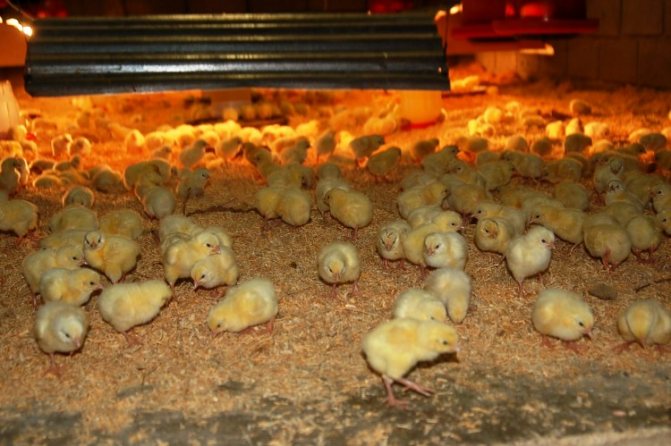

Nutrients in the diet
A complete diet contains the nutrients that birds need. This should be taken into account when preparing food with your own hands.
Food composition:
- Proteins. These substances are essential for the growth of chicks. The food should contain 15-20% of proteins, their amount depends on age. Proteins are found in egg whites and yolks, peas, soybeans, lentils, oatmeal, corn, wheat grains, meat and fish broths are richer in them.
- Carbohydrates. These substances are the energy component necessary for the growth and activity of the young. Carbohydrates are simple (glucose, sucrose, fructose) and complex (starch, fiber).Complex ones are found in cereals, vegetables, coarse grains. They provide normal digestion and intestinal motility; the diet should contain 7-10% complex carbohydrates.
- Fats. Regular chicken feed contains a sufficient amount of fat and does not need to be added to avoid causing stomach problems. The only exception is fish oil, which contains vitamin D.
In addition to the main components, food should include vitamins and minerals. The most important for chicks are vitamins A, B, E and D. Vitamin A is found in fresh herbs, vegetables (carrots, pumpkins, zucchini). Cereals and brewer's yeast are rich in vitamin B. Tocopherol or vitamin E is found in legumes and wheat germ. Vitamin D is produced by exposure to sunlight and helps the body absorb calcium and phosphorus. If the chicks grow indoors, they are given fish oil or preparations with this vitamin.
It is important for prospective layers to be given enough calcium-rich food. This mineral affects the growth of bones and the hardness of the egg shell. There is a lot of calcium in cottage cheese and dairy products. From the second week, bone and fish meal is gradually introduced into the diet of young chicks.
Growing start
At the same time, it is especially important to raise healthy birds suitable for a future life. It is the first days of life of small chickens that form their immunity and the ability to survive in future conditions.
Feeding chicks in the first week
The chick must be fed within 2 hours from the moment of birth. This promotes the development of feeding instinct, improves weight gain and the health of young animals. They are not yet able to eat on their own. If the chicks were brought out by a kvochka, she herself will take care of the training of the newborns. Incubator birds will have to be taught on their own - you should knock on paper with food, shove a piece into the beak.
On the first day, it is advised to feed the chickens at home with boiled egg or corn flour. Some poultry farmers claim that the percentage of fat in chicken egg yolks is too high for day-old chicks, but this theory has not been confirmed. At the age of 2 days, corn flour, semolina are mixed with the egg, you can feed the chick with yogurt or kefir.
Three-day-old chicks are fed with cottage cheese, millet, millet, chopped buckwheat, wheat, oats, corn, rice in equal parts. At this age, be sure to give chopped greens - nettles, meadow grass, plantain, dandelion. To prevent infections and improve digestion, a little green onions are poured into the mash. The menu includes vegetables - boiled carrots, zucchini. From 4-5 days they give minerals, cake and meal.
Feed rate for chickens in the first days (in grams per bird):
- a mixture of egg whites and yolks - 2 g;
- curdled milk - 5-8 g;
- low-fat cottage cheese - 1-1.5 g;
- grain - 5-9 g;
- cake and meal - 0.2 g from 4 days;
- greens, carrots - 1-3 g;
- minerals - 0.4 g
Already at the end of the first week, the percentage of grains in food should increase, and on the tenth day, these components should make up the majority of the menu. Some farmers advise to give at this time a complete feed for chickens - "Sun" or "Purina" for intensive growth. The mixtures contain all the necessary grains, vitamins and minerals. Newborn chicks should be fed and watered every 2 hours, even at night. Then 8 times a day. They are provided with round-the-clock access to water, at the beginning and at the end of the week, potassium permanganate is added to it.
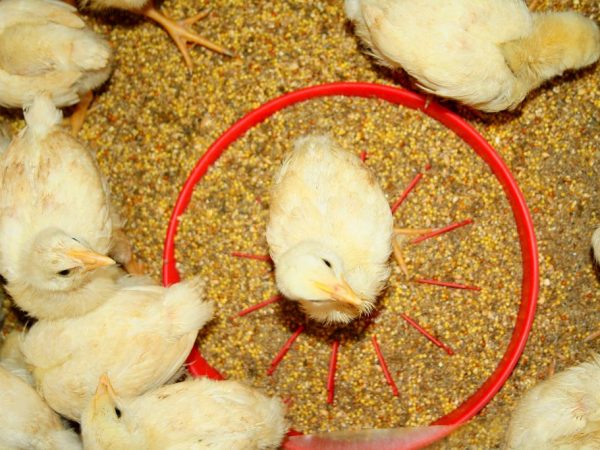

The chick must be fed within 2 hours from the moment of birth
A few words about diseases
Despite all the care the farmer gives the chicks, signs of any health problems may occur. More often people are faced with the following ailments:
- lack of vitamins;
- food poisoning;
- digestive problems;
- helminthic diseases and so on.
For the correct elimination of health problems, it is recommended that you familiarize yourself with the main types of symptoms that may arise in one case or another. It is not for nothing that they say that it is easier to prevent a disease than to cure, which means that it is worth taking care of preventive measures, which include:
- timely cleaning and disinfection measures in poultry premises using saline solutions, as well as other means;
- planting density should not exceed sanitary standards;
- feed must be of high quality and contain the necessary nutrients;
- each room must be equipped with ventilation systems;
- it is important to observe the temperature regime necessary for the young;
- periodic drinking of drugs that help prevent infectious diseases;
- it is imperative to carry out timely vaccination of all livestock.
Similar articles:
- The occurrence of limb problems in chickens
- Why do chickens stop laying in winter?
- What gives the chicken yolk color?
Feeding chicks at 2-3 weeks
Eggs are removed from the menu these days. Ten-day-old chicks continue to be fed with cottage cheese and yogurt. More attention is paid to mash-ups with vegetables and grain, boiled potatoes, fish and meat-and-bone meal, pre-starting ready-made feed for a rapid increase in mass are introduced.
Cereals continue to grind, chicks begin to eat whole grain only from a month. The main types of cereals are barley, corn, wheat, oats, millet, millet. They are steamed or served raw, mixed with boiled potatoes and other vegetables. Chopped greens are also added to the mash - nettle, dill, grass, lettuce, carrot tops. Each farmer can make a recipe for such feed mixtures himself, adhering to the basic recommendations for feeding norms. A good homemade organic food contains the following:
- chopped corn grain - 50%;
- cake - 18%;
- crushed wheat grains - 12%;
- meat and bone meal - 7%;
- feed yeast - 5%;
- chopped grass - 3%;
- return (powder) - 3%;
- feed fats - 1%.
Feeding scheme and table for two-week-old chicks (in grams per individual per day):
- curdled milk - 15 g;
- cottage cheese - 2 g;
- equal parts corn, oats, barley, millet - 13 g;
- fish or meat and bone meal - 1 g;
- cake and meal - 0.5 g;
- greens - 7 g;
- boiled potatoes - 4 g;
- mineral supplements - 0.7 g
At the end of the first week, young chicks begin to be released into the street. The diet of chickens will be replenished with fresh grass, insects, worms. Birds at this age already know how to look for food for themselves, which should be taken into account when calculating the daily amount of food.
Feed consumption table from the first week to the month
Below is a table with the approximate amount of feeding chicks for each week to a month of life.


Be sure to read:
Which is better to buy a premix for laying hens and broiler chickens or do it yourself
| Age | Bird weight | Required amount of feed | Required feed |
| First week | 70-90 g | Up to 15 g per day | Starter compound feed |
| Second week | 130-160 g | 20 g | |
| Third week | 220-270 g | 27 g | |
| Fourth week | 340-350 g | 35 g | Growth compound feed |
Some poultry farmers use crushed grain or cereals instead of starting compound feed. At the same time, the amount of food for the chicks is different from the norm. It is necessary to take into account the calorie content, age, direction and breed of the bird.
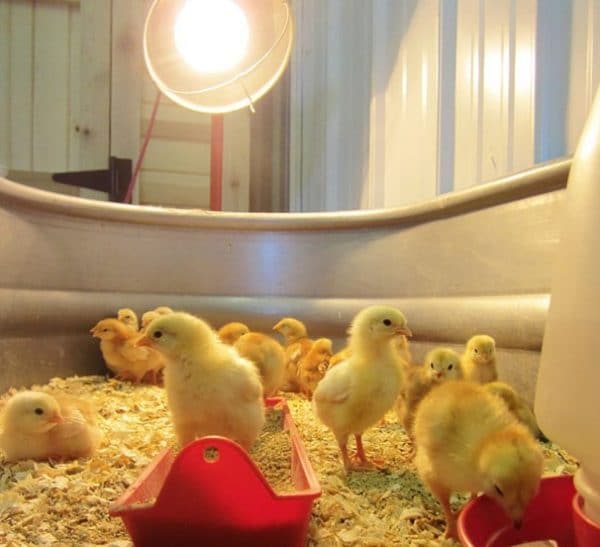

Some poultry farmers use crushed grain or cereals instead of starting compound feed.
The transition from the initial to the growth compound feed is carried out gradually. It is necessary to take into account the age of the chickens, weight and subspecies. Chicks of the meat direction are transferred a little earlier.
Feeding one month old chicks
The diet of monthly males and females is substantially supplemented by food that they independently find on the street. Chicks begin to feed on green grass, flies, beetles and worms.So they replenish the supply of proteins and vitamins. But this does not mean that it is necessary to reduce the amount of food. Young growth becomes more active and at the same time continues to grow intensively.
The menu is based on a grain feed mixture with wheat, corn, barley and oats. At the poultry farms, starting compound feed is given at this time. From 6 weeks old, males and layers are fed whole grains.
They continue to feed monthly chickens with vegetables: carrots, pumpkin, zucchini, beets, cucumbers. Wet mash is made on the basis of boiled potatoes. The menu also includes food waste - vegetable peelings, leftovers from cereals, soups, meat dishes. They should be fresh and not sour or moldy. Chicks continue to be fed cottage cheese and sour milk to replenish calcium and protein stores.
Be sure to feed the chickens at home with mineral supplements. They are given meat and bone meal and fish meal. Chalk is added to grain and wet mash. Next to the feeders and drinkers, containers filled with crushed shells and pebbles are placed. In order for the chicks to grow, they need vitamins for normal metabolism and absorption of calcium. Therefore, fish oil is mixed into their food, they are given special complexes for chickens.
Correct feeding of monthly chicks and ration rates (per chick):
- sour milk - 20-35 g;
- cottage cheese - 3-4 g;
- grain mixture - 22-32 g;
- fish and meat and bone meal - 1.4-2.8 g;
- cake and meal - 0.6-1.2 g;
- greens, carrots, zucchini - 10-13 g;
- potatoes and other root crops - 10-20 g;
- mineral feed - 1-2 g.
The table shows the full-fledged norms for young stock at the age of 1-1.5 months, they are also suitable for two-month-old hens and roosters. At this age, 4-5 daily feedings should be carried out. Proper care is also important, regular bird walking is required.
Helpful Tips for Beginners
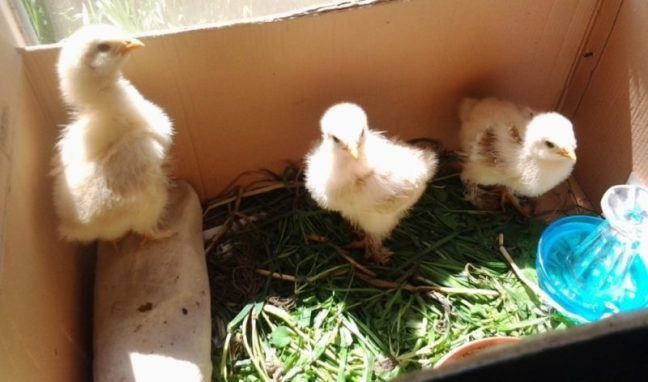

Those who want to start breeding chickens should remember that you can hatch them from eggs, buy one-day-old or more adult chicks from poultry farms. It is best to purchase young animals from trusted producers, in this case you can be sure that you will receive chicks from the same breed that you want.
If there are incubators or good brooding hens on the farm, you can breed chickens from scratch, which will also be quite profitable.
Feeding three month old chicks
Feeding three month old chicks is no problem. Broilers at this age are already sent to slaughter. The basis of nutrition at 3 months is compound feed, more often they choose "Finish" or a mixture for adult chickens. The compound feed is easy to prepare with your own hands. Here's a simple recipe:
- corn grain - 45-50%;
- wheat - 14-19%;
- meal - 19%;
- yeast - 5%;
- fish and meat and bone meal - 3% and 2%, respectively;
- green grass - 3%;
- chalk and shells - 1-1.5%.
Compound feed and grain mixtures are supplemented with wet potato-based mash. In the summer, the bird is fed with fresh vegetables that grow in the garden, tops. In winter, raw peelings of carrots and beets are given. From the age of three months, more legumes are added to their diet - peas, red beans, soybeans, lentils. It is recommended to give leftovers from the table - bread crusts, meat and fish scraps, cereals, vegetable dishes.
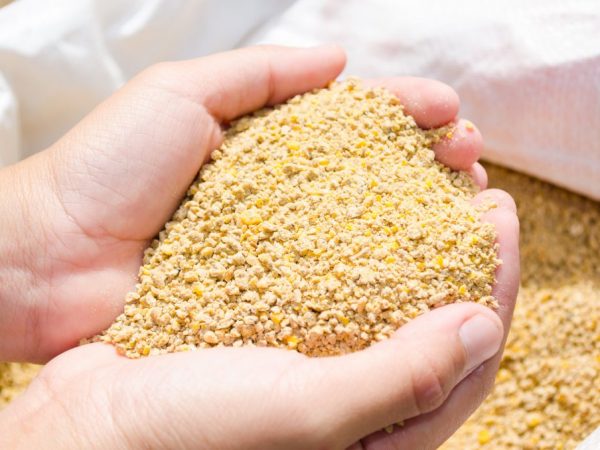

The basis of nutrition for chickens at 3 months is compound feed
Feeding chicks of different breeds
To feed chickens normally at home, take into account the direction of productivity. The diet of future layers will differ from that of broiler chickens and roosters.
Feeding chickens of meat breeds
The feeding of egg breeds in the first week is standard. Then more greens and minerals are added to the menu. The amount of protein for newborns is 20% of the total amount of all nutrients, and from 2-3 months of age - 16%. Laying hens should eat vegetables and grains that are high in fiber to avoid obesity. A chicken with an excess of mass is poorly carried.
Calcium is an important component of home feeding for laying hens.This mineral affects the strength of the eggshell and must be accumulated in the chicken's body in sufficient quantities. Therefore, the chicks are given cottage cheese, yogurt, kefir. Already at the end of the first week, mineral supplements and bone meal are included in the diet. Vitamin D is needed to assimilate calcium. To replenish it, fish oil is included in the diet for chickens from five days.
Feeding chickens of beef breeds
The main goal of fattening beef breeds and broilers is to increase body weight in a short time. A chicken and a rooster already at the age of two months have a mass of 1.5-2 kg. Feeding can be intensive and extensive. In the first case, the bird is kept indoors or in cages without walking. In the second, the chicks go outside, but their activity is limited.
For the first five days, broiler nutrition is no different from future layers. The only rule is that the menu includes more proteins - up to 21-22% of the total amount of nutrients. Chickens are given a boiled egg, reverse, yogurt, cottage cheese. Intensive protein nutrition is provided for up to a month.
Already from 2-3 days, meat breeds should eat compound feed (20 g per individual per day). First it is "Predstart", from 2 weeks - "Start", and from one month - "Finish" for broilers and guinea fowls. Five-day-old chicks must be supplemented with vitamins A, D, E and B. It is also advised to feed the chickens at home with wet mash, which consists of carrots, greens, steamed cereals. In two weeks, potatoes, meat and fish, bone meal are introduced.
From the second month, the amount of proteins is reduced to 14-16%. At this time, the menu should consist of carbohydrates, fiber is given less than hens. With extensive fattening, the chicks are allowed to walk in the yard. Up to three months old, broilers reach their intended weight and begin to recover more slowly. Therefore, at this age they are sent to the slaughter. For 1 kg of growth, meat chicken eats 2.5-3 kg of feed during the period of rapid growth, after 3-4 months food consumption increases, it becomes unprofitable to keep the livestock.
Conditions of detention
Growing conditions for chickens should be as comfortable as possible. Chick rearing cages should be as comfortable as possible.


A little matured chicks need to be transferred to an incubator, in which an experienced hen-hen must be placed, in order to preserve small chicks.



